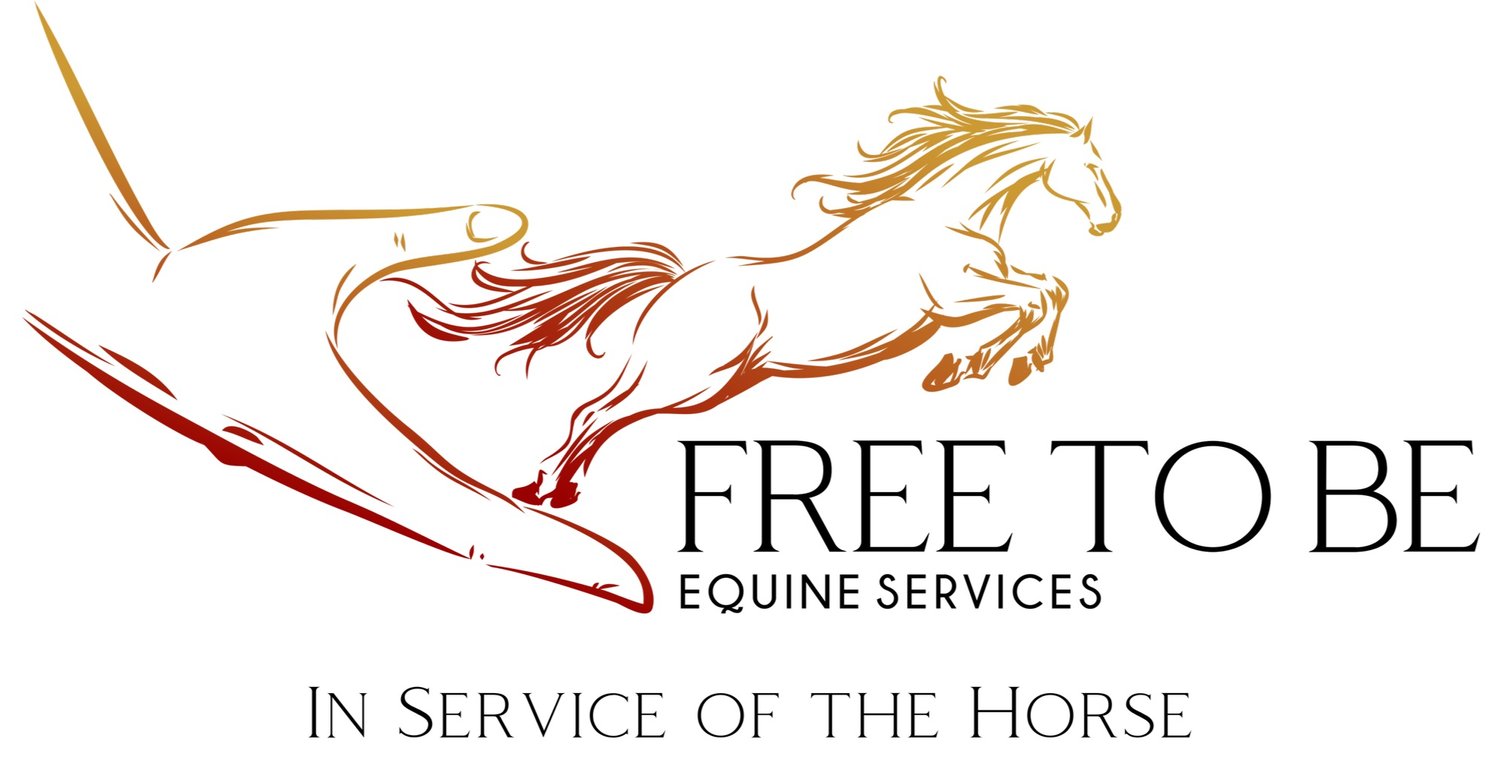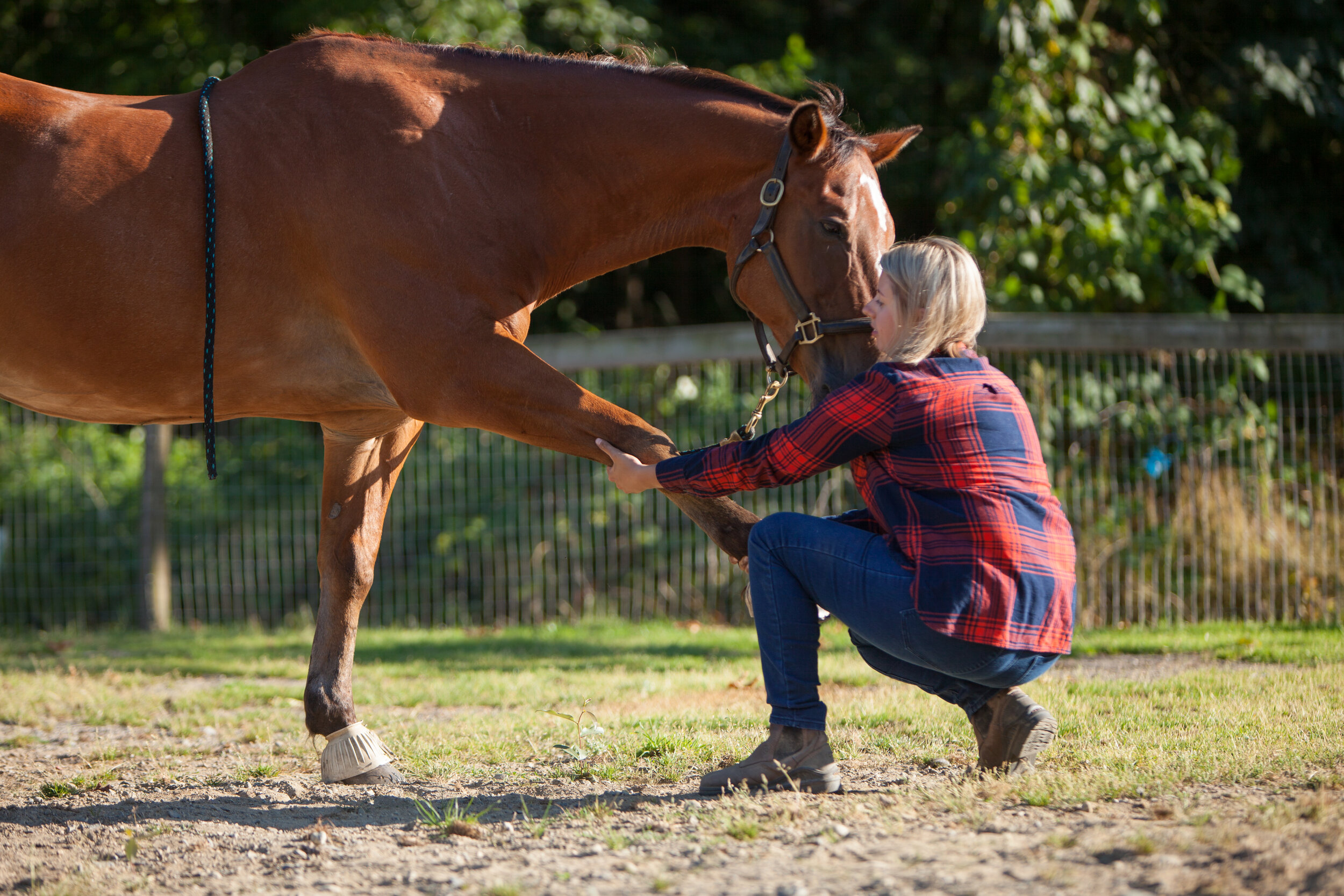It warms my heart to see how relaxed horses become during a massage session. They might yawn, lick and chew, lower their head to the ground, rest a leg, glaze over and slowly blink their eyes, or even drool. Once they figure out why I’m touching them, it doesn’t take long to see some or all of these behaviours during a session.
As much as I love witnessing the relaxation brought on by what I do – there is SO much more to it than just relaxation! So what other benefits are there? There are many to list, but I’ll touch on a few that I think are imperative to our horses’ performance.
I often talk about “myofascial release”, but what is that? Simply put, it is the act of gently releasing the tension and adhesions in the muscle fascia. So what is fascia? Fascia is a sheet of connective tissue beneath the skin that encloses, separates, stabilizes, and attaches all muscles – to each other, to internal organs, tendons, bones, etc. Tight, restricted and otherwise unhealthy fascia will cause muscles to become tight, sore and less flexible, prevent joints from achieving their full range of motion, and even cause discomfort and instability in other areas of the body, due to the fascia’s continuous structure from head to hoof. Releasing tension in the fascia in one small area is enough to relax an entire muscle group. Combining myofascial release with other massage techniques and stretches is a highly effective way to eliminate tension, discomfort, compensation and asymmetry in your horse’s body.
How does myofascial release and massage help to align the body? Imagine what affect fascia and muscle tension pulling on a joint does to its range of motion. How can your horse bend well in both directions if the movement of his neck, shoulders or rib cage is restricted by tension? How can he step under himself properly if fascial adhesions are preventing full range of motion in his stifle or SI? It’s amazing to see how freely a horse can move again after the fascia is returned to a healthy state and the muscles become soft and pliable, no longer pulling or restricting. This is also why most equine chiropractors recommend massage therapy and myofascial release in conjunction with their work. Often, soft tissue work on its own facilitates enough correction that chiropractic adjustments aren’t even necessary.
If you’ve ever studied an image or drawing of equine anatomy, you’ll have seen the nature in which the tendons of the lower leg are connected to the corresponding muscles of the body. Any tension or restriction in those muscles above affects the tendons below. Tendons, ligaments and the joints that they support are directly affected by the musculature – and if those muscles are not moving freely and correctly, unnecessary strain and the possibility of injury is what results.
An educated equine therapist has also studied equine biomechanics and can make suggestions to you or your trainer to help overcome problems with muscle development and posture. There are many simple massage techniques, stretches, and exercises (in-hand and under saddle) that you can do yourself to help prevent your horse from redeveloping the same issues that the therapist is working with you to correct.
What causes these muscle tension and fascia problems to begin with? It can be any variety of things such as falls or traumas, working in an incorrect posture, tack that no longer fits, compensation developed from an old injury, the effects of ageing, rider imbalance, you name it! Sometimes something as simple as continuously eating from a hay net hung too high can cause asymmetric muscle development and subsequent tension in the body.
It’s also important to remember that equine therapy does not replace traditional veterinary medicine, but provides a complementary system of care. When in doubt, please call your veterinarian. Your horse must be free of illness and acute injury before you consider calling your equine therapist.
Thanks for reading, and I hope you learned something new!

